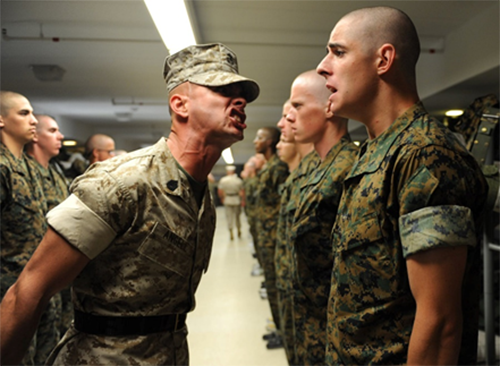Improve Your Resiliency Without Wearing Camouflage

Photo credit: Pexels
Author: Larry Colby
What you think affects how you feel and perform. Training your brain is as important as training your body.
Military members and first responders learn early in their training how to deal with stress because of the inherent danger of their occupation. Although stress certainly comes with being in harm’s way, they may also experience stress that comes with facing the unknown, time pressures, and challenging tasks. On top of all of that, add in the social isolation that comes from prolonged absences from family and friends, and you have a need for resiliency. That is, military members need to perform their jobs in the face of immediate danger, such as entering a burning building or landing an aircraft safely despite an electrical failure.
How do these members deal with stressful conditions? Can we apply their techniques to build our own resiliency? The answer is a definitive yes.
How I Learned About Resiliency
Over 29 years ago, I stepped off the bus at U.S. Marine Corps Officer Candidates School into the hot, summer wind of Quantico, Virginia, and my world was rocked both physically and mentally as I learned about leadership and stress from Marine Corps Drill Instructors.
The instructors put us through a program so physically and mentally demanding that we were not even sure we would pass until graduation day. The lessons taught by the Sergeant Instructors were life-lasting. The curriculum—also used by law enforcement and fire departments—intentionally exposes members to stressful situations and teaches them how to reduce their stress through physical fitness and mental adaptability. Over the 12-week program, most of my class learned to manage the intentionally stressful situations that the Sergeant Instructors threw at us. After repeated exercises that involved an overwhelming number of physically demanding tasks in an unrealistic timeframe, combined with intentional chaos and distractions, we learned to adapt to change and build resiliency, relying on two techniques.

Photo credit: Pexels
You do not have to go through a program like I went through to learn to be more resilient. Having a strong body and mind during tough times at home or work can help you succeed. In fact, I recently started teaching these techniques to my teenage sons before their exams and wrestling and golf matches.
Resiliency is especially important during the current global coronavirus crisis. The Washington Post reports a significant rise in “depression, substance abuse, post-traumatic stress disorder and suicide” resulting from stress due to the coronavirus. So, let me now share these two techniques with you.
Resiliency Technique 1: Building Confidence Through Success
Dr. George Everly at Johns Hopkins Bloomberg School of Public Health studies characteristics of highly resilient people. His research finds that resilient individuals have a strong social support network, optimism, the ability to persevere through problems, and a strong work ethic. They also display high levels of responsibility and integrity.
Although some people may naturally have these characteristics, Dr. Everly recommends taking several steps to incorporate them into the workplace:
- Allow employees to experience success by assigning them to successful teams (assign them to your own immediate team and be the example, if needed)
- As a leader, make sure that people feel that it is okay to speak up or act without feeling embarrassed or punished; encourage people to strive for high performance, and help them get there with mentoring and training
- Promote confidence in your team’s ability to do their work by recognizing the challenges they overcame
I used these steps as a military pilot when I was leading an aircrew in the flying squadrons. I placed younger, less experienced co-pilots in positions where they could gain experience. I routinely asked new co-pilots to plan and brief our missions so that they were comfortable with the flight route, aircrew, and surrounding airspace. With this experience, along with an expanded network of colleagues, the new pilots gained confidence.
The new pilots also observed the positive attitude and dedication of the flight crew. We demonstrated how to make deliberate, effective choices to successfully navigate and fly the aircraft, even when faced with challenges such as weather or mechanical issues.
Consider how you might help a new hire or summer intern build their optimism and confidence. When talking with them, you could highlight the strengths of your team and give them chances to observe these strengths on their initial assignments. You could also be sure to encourage them as they tackle challenges that come with learning any new job. Finally, be sure to serve as a role model by being optimistic when things do not go as planned. Optimism is contagious, so let a new teammate catch it!
Resiliency Technique 2: Tackle the Four-Steps
A second technique, borrowed from Navy SEAL training and my own experience as a military pilot, relies on a four-step procedure. You can use these steps to focus your mind before a task, such as taking an exam, giving a presentation or a participating in sporting event you have been training for. Before engaging in the task, find a few minutes to:
- Set a goal: Find a goal, no matter how small, and start your journey
- Visualize: Rehearse the task in your mind by visualizing yourself performing it
- Self-Talk: Tell yourself you can accomplish the task
- Breathe: Take deep breaths, in through your nose for 4 seconds, and then out through your mouth for 4 seconds, which calms your body and helps control your emotions
I have used the four steps prior to every run while training for marathons, before strapping in to fly military aircraft, and ahead of giving work presentations. When I trained for a marathon, I set a goal to finish the race with a certain time. I then visualized the entire racecourse with the help of Google Maps. I practiced controlling my breathing when I felt excited at the starting line. During my training, I told myself that my training would prepare me to meet my goal. This technique is also used by professional athletes, musicians, and actors.
What if you asked your work team to use this technique when they rehearsed a presentation as well as when they gave the presentation? You could have them visualize the presentation, remind them to think positively, and apply deep breaths to calm their nerves.
Practice Makes Progress
With practice, I am confident that you will become mentally stronger and more resilient. Given my positive experiences with these techniques, I believe that you will be able to better focus on your goals, make good decisions under pressure, and achieve peak performance. You might not get the results you want overnight, but by making a concerted effort to practice these techniques, you will improve.
To learn more about the connection between military training and resiliency, check out the links at University of Pennsylvania, US Army Comprehensive Soldier Fitness Resilience Program, and Naval Special Warfare (SEALs) to read how they built resiliency.
Larry Colby is an Organizational Change Management Principal at MITRE. He specializes in Human and Organizational Systems with a variety of government organizations. He has flown for the U.S. Marine Corps and is a retired military pilot from the U.S. Air Force. He holds an MS in National Resource Strategy from National Defense University and an MA in Leadership from Duquesne University. Larry is also the author of the Ford Stevens Military-Aviation Thriller Series that features the Reserve Component of the U.S. military.
© 2020 The MITRE Corporation. All rights reserved. Approved for public release. Distribution unlimited. Case number 20-1352
MITRE’s mission-driven teams are dedicated to solving problems for a safer world. Through our public-private partnerships and federally funded R&D centers, we work across government and in partnership with industry to tackle challenges to the safety, stability, and well-being of our nation. Learn more about MITRE.
See also:
A Serious Game Enhances Organizational Agility
Let’s Maintain Agility After the Coronavirus
Come Together: Knitting as Craft and Metaphor for Building Virtual Social Culture
The Lunch and Learn is not the Solution to Everything
Changing Organizations Using the Power of Localism
Communication—the Special Sauce of Major Change
Mistakes and Transcendent Paradoxes: Dr. Peter Senge Talks on Cultivating Learning Organizations
Naming the Elephant in the Room
Preparing for the Future by Knowing How to Take a Punch
Interview with Awais Sheikh on Deciphering Business Process Innovation
Interview with Dan Ward, Rachel Gregorio, and Jessica Yu on MITRE’s Innovation Toolkit
Interview with Tammy Freeman on Redefining Innovation
